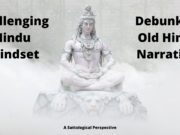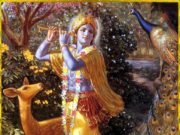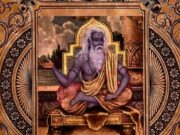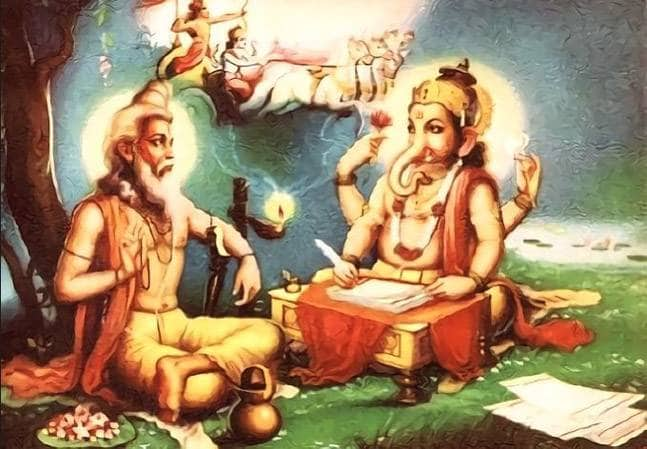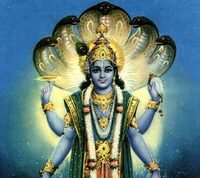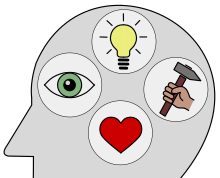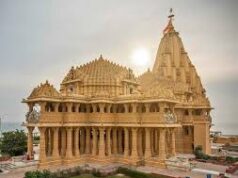नारायणं नमस्कृत्य नरं चैव नरोत्तमम् ।
देवीं सरस्वतीं व्यासं ततो जयमुदीरयेत् ॥ ४ ॥
I offer my humble obeisances to Narayan and Nara (Arjun), unto Devi Saraswati, unto Vyasa by whose mercy the entire Vedic history known as Jaya became known to the world.
This shloka appears as the first shloka of Mahabharat. It also appears in Bhagavata Purana at 1.2.4.
This shloka has been misinterpreted by many scholars. Mahabharat was written by Ganesh ji and blessed by Vyasadeva. While Vyasadeva was contemplating writing this great prose, Brahma descended and blessed this thought of Vyasadeva.
He also predicted that as long as there are hills and rivers on this planet, this great prose will be famous all over the earth and upper planetary systems.
The word Jaya means all ancient vedic itihas or history such as Ramayan, Mahabharat, Puranas and other vedic histories such as biographies of great Acharyas or Teachers who sincerely follow Vyasa. Jaya is a common word for all itihas or history. Because that history enables a human being to gain victory over repeated birth and death. Mahabharat and other Vedic itihaas helps us gain Moksha from the repeated cycle of birth and death. That’s why it is also called Jaya.
The entire Mahabharat was compiled within three years by Vyasadeva and Ganesh.
As per Vyasadeva in Mahabharat, He compiled 60,00,000 total verses in Mahabharat. Out of those, 30,00,000 were delivered to Dev loka, which were recited by Narada Muni to Devatas. 15,00,000 were delivered to Pitr Loka, which were recited by Asita-Devala Rishi to Pitras. 14,00,000 were delivered to Gandharva Loka, which were recited by Sukadev Goswami (son of Vyasadeva). 1,00,000 were delivered to Manushya Loka or Mrtyu Loka, which were recited by Vaishampayana, a disciple of Vyasadeva.
When Vyasadeva requested Ganesh to become a scribe, Ganesh ji agreed on one condition. Whenever Vyasadeva stopped dictating, he would stop and leave.
Then Vyasadeva put a counter condition, wherein he asked Ganesh to write only after he understood it well. In between, Vyasadeva would recite some complex shloka whose meaning only he understood, or Sukadeva understood and maybe Sanjay understood. These complex shloka or verses numbered 8800. There were other 24,000 which were mildly complex and another 150 which were descriptive verses.
The total number of shloka that constitute Mahabharat given to Human beings or Manushya is 100,000. They are all called Jaya.
Vyasadeva also declared that any history that doesn’t source it’s origins to Mahabharat is a fake history or mythology. Mahabharata is Sattology as is Ramayan and other Puranic history.
Mahabharat history is written in Mahabharat itself and we have to understand the way it is mentioned in Mahabharat itself. Any interpretation is not needed for Mahabharat.
References: Original Mahabharat by Vyasadeva
Disclaimer: The views expressed are personal to the author
Credits: Google search for title picture. The copy rights of the picture belongs to the person who created it.
Please donate to support our Hindu causes.


